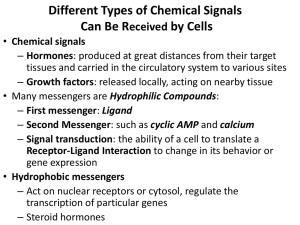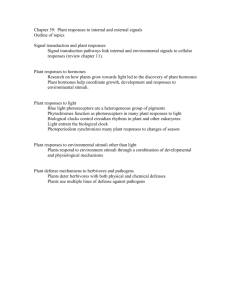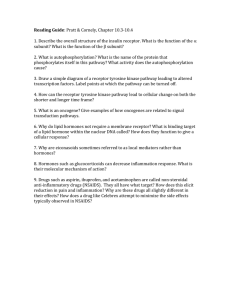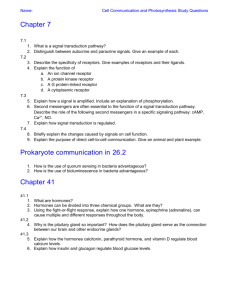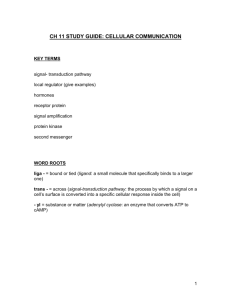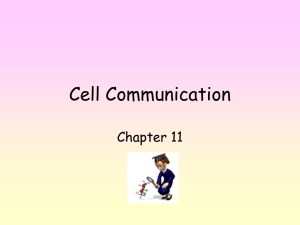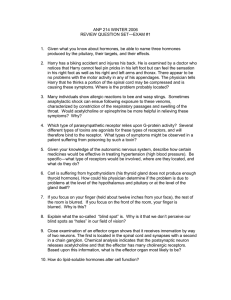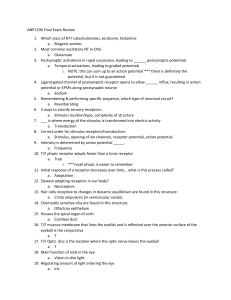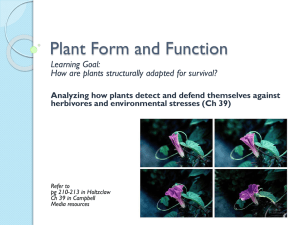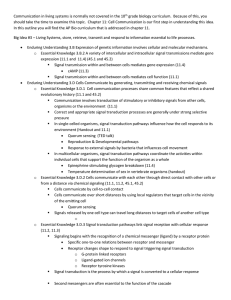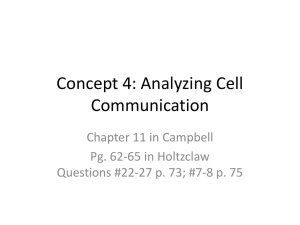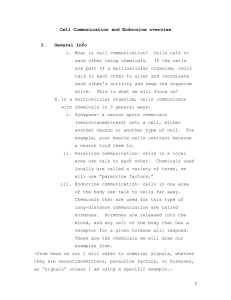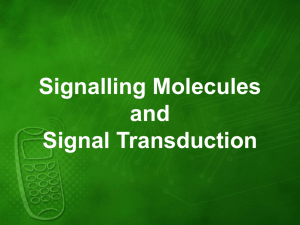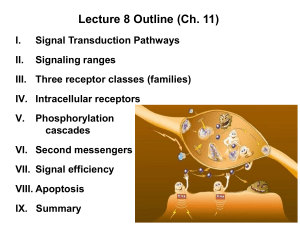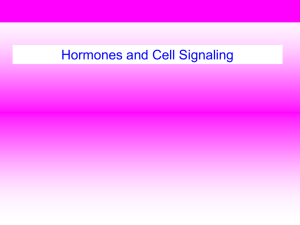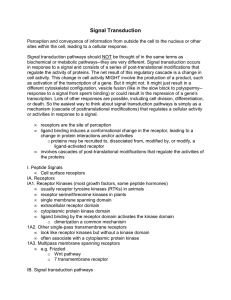Name: Cell Communication Study Questions Chapter 7 What is a
advertisement
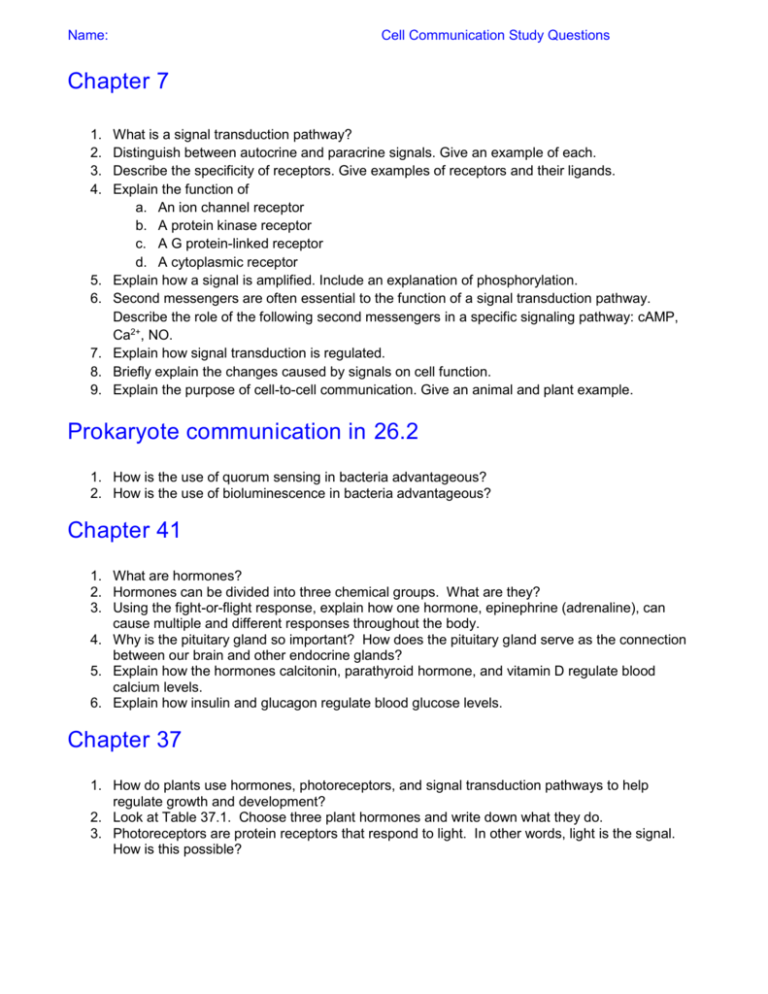
Name: Cell Communication Study Questions Chapter 7 1. 2. 3. 4. 5. 6. 7. 8. 9. What is a signal transduction pathway? Distinguish between autocrine and paracrine signals. Give an example of each. Describe the specificity of receptors. Give examples of receptors and their ligands. Explain the function of a. An ion channel receptor b. A protein kinase receptor c. A G protein-linked receptor d. A cytoplasmic receptor Explain how a signal is amplified. Include an explanation of phosphorylation. Second messengers are often essential to the function of a signal transduction pathway. Describe the role of the following second messengers in a specific signaling pathway: cAMP, Ca2+, NO. Explain how signal transduction is regulated. Briefly explain the changes caused by signals on cell function. Explain the purpose of cell-to-cell communication. Give an animal and plant example. Prokaryote communication in 26.2 1. How is the use of quorum sensing in bacteria advantageous? 2. How is the use of bioluminescence in bacteria advantageous? Chapter 41 1. What are hormones? 2. Hormones can be divided into three chemical groups. What are they? 3. Using the fight-or-flight response, explain how one hormone, epinephrine (adrenaline), can cause multiple and different responses throughout the body. 4. Why is the pituitary gland so important? How does the pituitary gland serve as the connection between our brain and other endocrine glands? 5. Explain how the hormones calcitonin, parathyroid hormone, and vitamin D regulate blood calcium levels. 6. Explain how insulin and glucagon regulate blood glucose levels. Chapter 37 1. How do plants use hormones, photoreceptors, and signal transduction pathways to help regulate growth and development? 2. Look at Table 37.1. Choose three plant hormones and write down what they do. 3. Photoreceptors are protein receptors that respond to light. In other words, light is the signal. How is this possible?
